Hey there wakeboarding enthusiasts! If you’re like me, there’s nothing more thrilling than getting pulled behind a boat on your wakeboard and catching some sweet air. But driving the boat that pulls wakeboarders is an art in itself. There’s a lot more to it than just gassing the engine and going. You need skill, technique, and knowledge to keep your riders safe while also giving them the best possible wake to shred.
In this post, I’ll walk you through everything you need to know about driving a wakeboarding boat. Whether you’re a beginner boat driver or a seasoned pro, you’ll find some helpful tips here. Let’s drop in and get started!
Getting Your Boat Ready for Wakeboarding
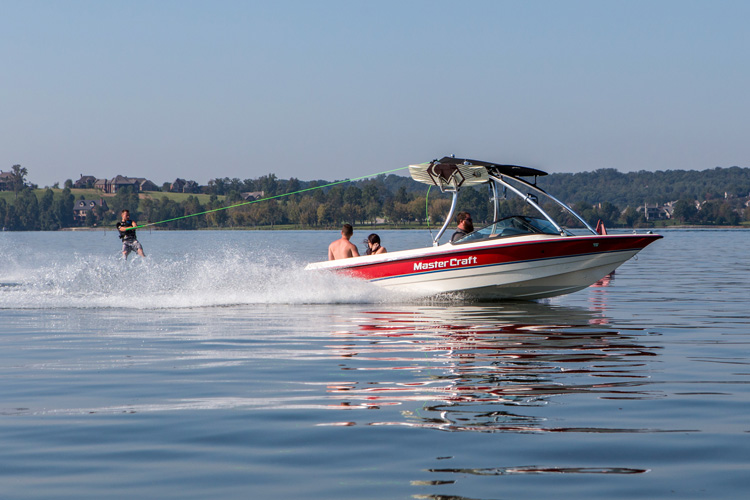
Before you even hit the water, there are a few things you need to do to get your boat ready for wakeboarding:
- Check the Tow Points: Make sure the tow points on your boat are secure and in good condition. Tow points take a lot of stress when pulling a wakeboarder, so inspect them closely for any signs of wear or loosening. The last thing you want is for a tow point to rip out during a ride!
- Fill the Ballast Tanks: Most wakeboarding boats have built-in ballast tanks that can be filled with water to weigh down the stern and create a bigger wake. Fill those tanks up! The more ballast you have, the better the wake will be. Just don’t overload your boat – stay within the ballast capacity limits.
- Set Up the Boarding Ladder: Lower the boarding ladder at the back of the boat so riders can easily climb in and out of the water. Nothing’s worse than treading water forever waiting for the ladder to drop!
- Check the Safety Equipment: Make sure you have all required safety gear like life jackets, fire extinguisher, horn, throwable flotation device, and emergency stop switch. Safety first!
- Gather the Riding Gear: Get the wakeboards, wetsuits, ropes, handles, and anything else the riders will need ready to go. You don’t want people waiting on the dock while you scramble to find their gear.
How to Pull a Wakeboarder
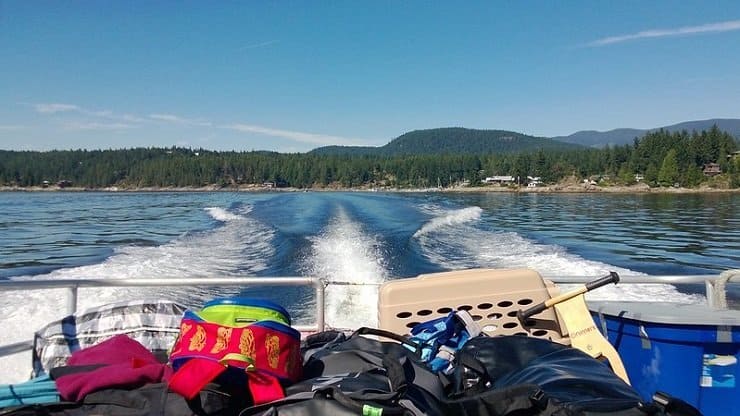
Okay, now you’re all set up and ready to hit the water! Here’s how to actually pull a rider up on their wakeboard and get the action started:
- Start With Idle Speed: As the rider enters the water behind the boat, put the boat in gear but keep the speed at idle. Unlike waterskiing, you don’t need a fast pull to get a wakeboarder up.
- Gradually Accelerate: Once the rope gets tight, very slowly start to accelerate the boat. Go slow enough that the rope gently pulls the rider up without jerking them out of the water. Usually 2-4 mph does the trick.
- Maintain Steady Speed: As the rider gets pulled up and finds their balance, maintain a steady speed according to their skill level – usually 15-25 mph. Sudden speed changes will throw them off balance.
- Watch Your Wake: Pay attention to your wake and make sure it’s clean with no choppiness. A smooth, consistent wake gives the rider the best surface to ride on.
- Let the Rider Control the Pace: The rider uses hand signals to indicate when they’re ready to go faster, slower, or want to be dropped back into the water. Let the rider dictate the pace.
- Bring Them Back In: When the rider is finished with their session, slow the boat down gradually as they approach the ladder. Once they’re safely back inside, you can hit the throttle and do it all again!
How to Drive a Boat for Wakeboarding – Speed Control
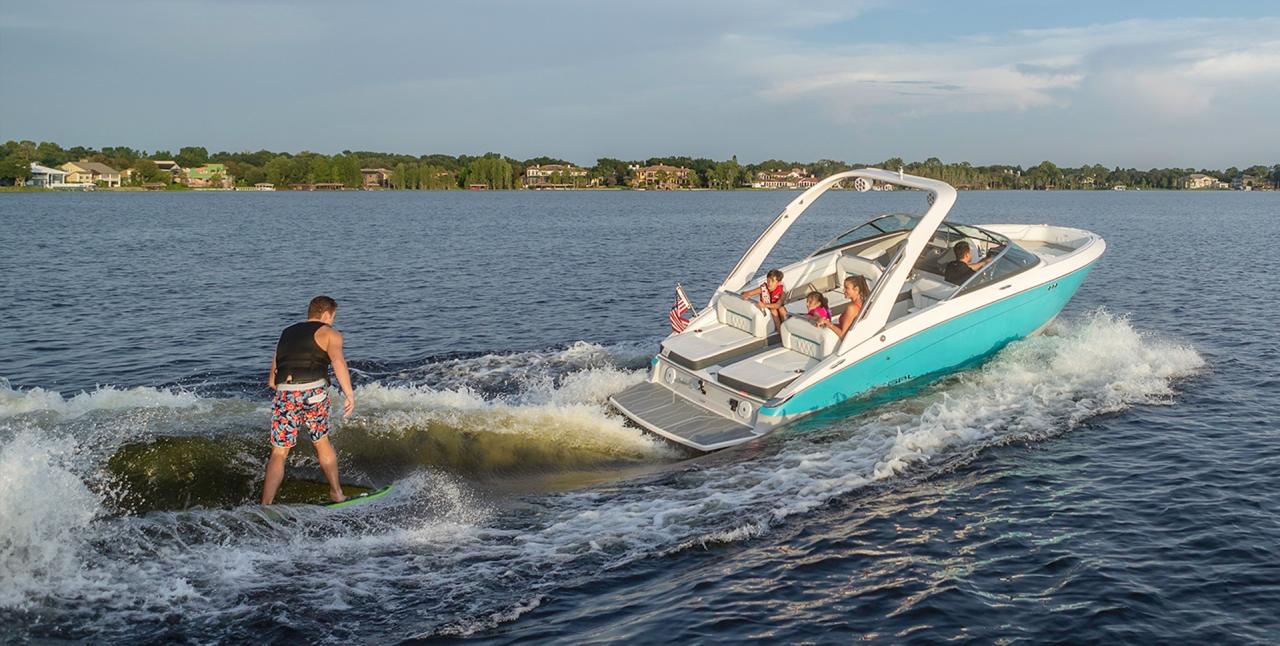
Controlling your speed is one of the most important aspects of driving a wakeboarding boat. Here are some speed control tips:
- Know the Limits: Always be aware of speed limits and regulations on any body of water. Following the rules is critical for safe, responsible boating.
- Start Slow With Beginners: For wakeboarders just learning, go with slower speeds like 12-15 mph to give them time to get up and steady themselves.
- Faster for Advanced Riders: More experienced riders will want faster speeds like 18-24+ mph to gain momentum for air tricks and other advanced moves.
- Find the “Sweet Spot”: Each rider will have a personal “sweet spot” speed where the wake feels perfect to them. Ask riders what speed works best for their style.
- Accelerate and Decelerate Gradually: Sudden speed changes can make riders lose balance and wipeout. Smoothly apply throttle or let off to avoid sharp speed transitions.
- Use Trim to Adjust: If the boat is porpoising or the nose is too high/low, use the trim controls to adjust without changing speed.
Driving Patterns
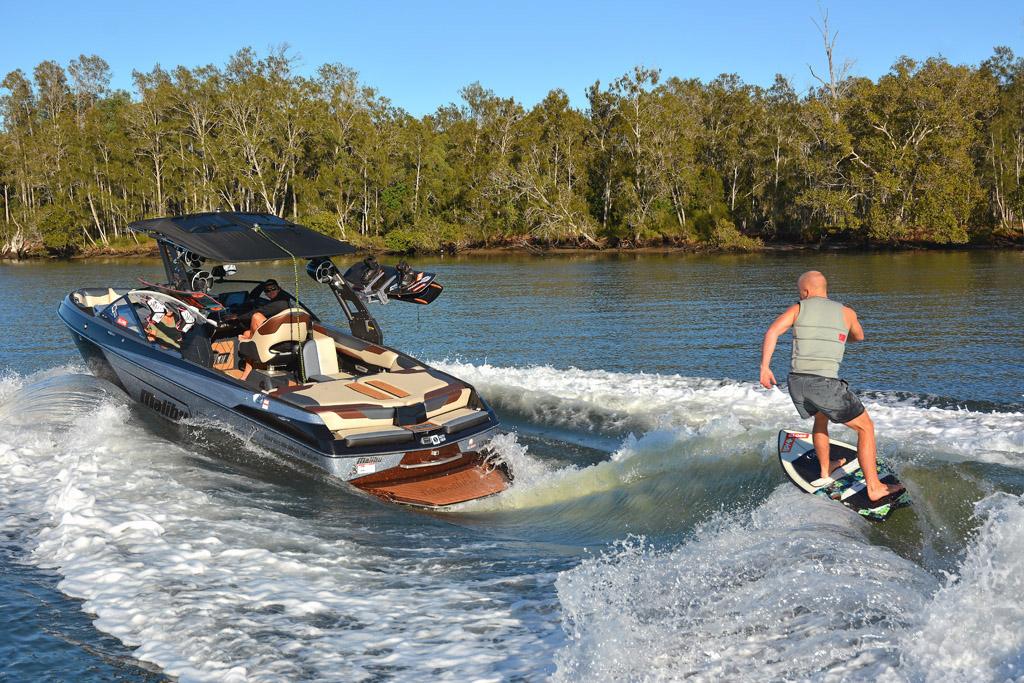
In addition to controlling speed, using the right driving patterns is hugely important for creating an optimal wake. Here are some key patterns to master:
- Straight Line: Drive in a straight line away from the rider to create a consistent, evenly-spaced wake for beginners to learn on.
- S-Turns: Make wide, swooping S-turn maneuvers to shape the wake into a ramp that throws more height for advanced tricks.
- Circles: Drive in a large circle pattern to focus the wake in one area, creating endless re-rideable rollers.
- Downwind: Position the boat downwind of the rider so the wind holds the rope taught for maximum pop off the wake.
- Upwind: Driving upwind makes the rope loose, slowing the rider’s speed for an easier, mellower ride.
- Sideways: A fun advanced tactic is crabbing the boat slightly sideways to shape a curved wake that launches riders on edge.
Communication
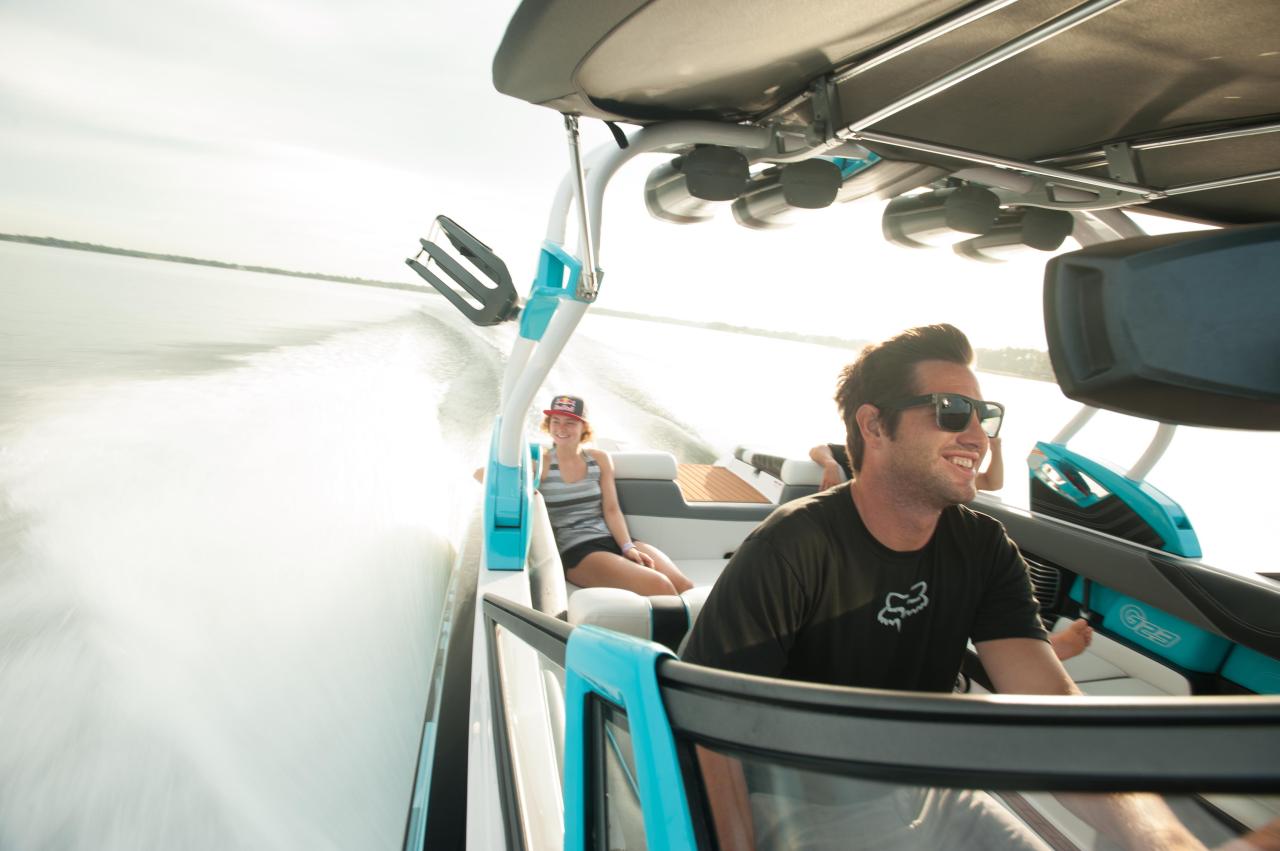
Clear communication between driver and rider is crucial for safety and coordination. Here’s how to communicate effectively:
- Agree on Hand Signals: Always confirm the meaning of hand signals with new riders before starting. Consistent signals prevent confusion.
- Make Eye Contact: Look back to make eye contact with the rider as much as safely possible so you see their signals.
- Watch Their Body Language: Notice things like the rope going slack or the rider crouching low which can indicate they want to slow down or be dropped in.
- Use a Mirror: Add a rearview mirror to your windshield so you can constantly see the rider and their signals.
- Bring a Spotter: Have someone ride along to face backward and relay signals between the rider and driver.
- Use a Radio/Headset: High-tech option: give the rider a waterproof radio to talk directly to the driver.
Picking Up a Fallen Rider
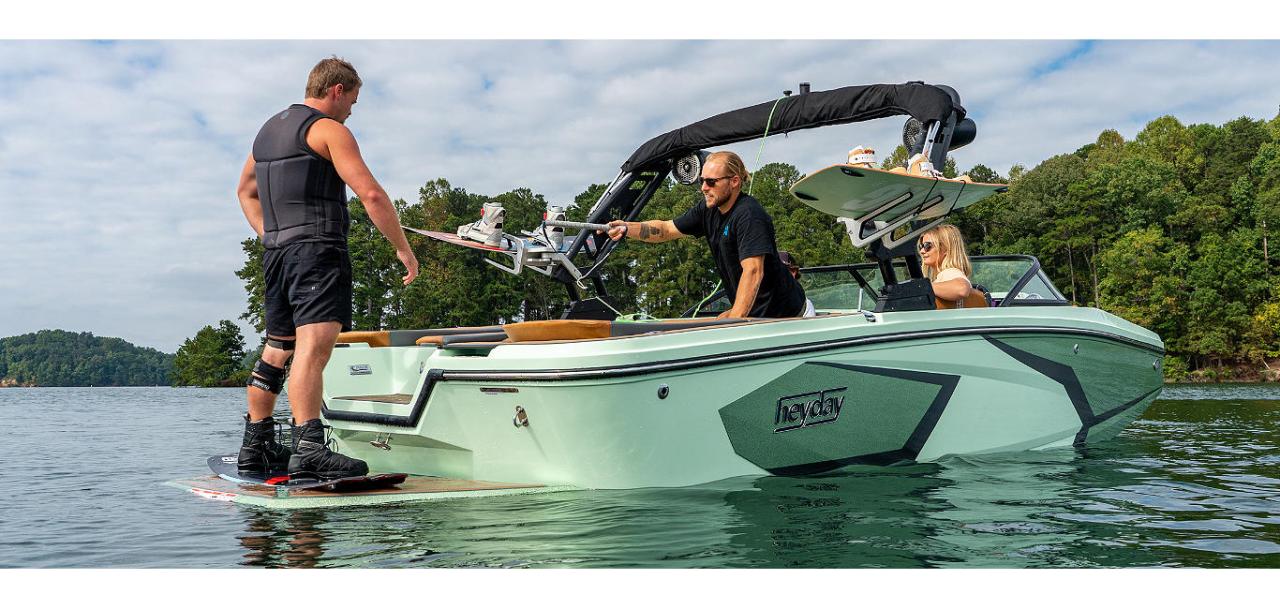
Wipeouts happen, so you need to know how to safely pick up a rider who has fallen:
- Come to a Controlled Stop: As soon as you see the rider fall, smoothly slow the boat to a complete stop. Don’t turn yet.
- Look Around: Before you start moving again, check for other boats, obstacles, and the rider’s position.
- Approach Slowly: Begin driving toward the rider at idle speed, no faster. Go slow enough to stop quickly if needed.
- Keep Some Distance: Don’t drive right up to the rider in the water. Stop while you’re still 20 feet or so away.
- Let Them Swim to the Boat: Have the rider swim to the ladder themselves so they don’t get swamped by the big wake of the idling boat.
- Watch Their Head: Make sure the rider is facing the boat as they swim up so they don’t get disoriented.
- Cut the Engine: When the rider is gripping the ladder, put the boat in neutral and cut the motor so they can safely climb aboard.
- Check for Injuries: Once back inside, ask if they have any injuries that need first aid. Have an emergency kit ready to go.
Towing Multiple Riders
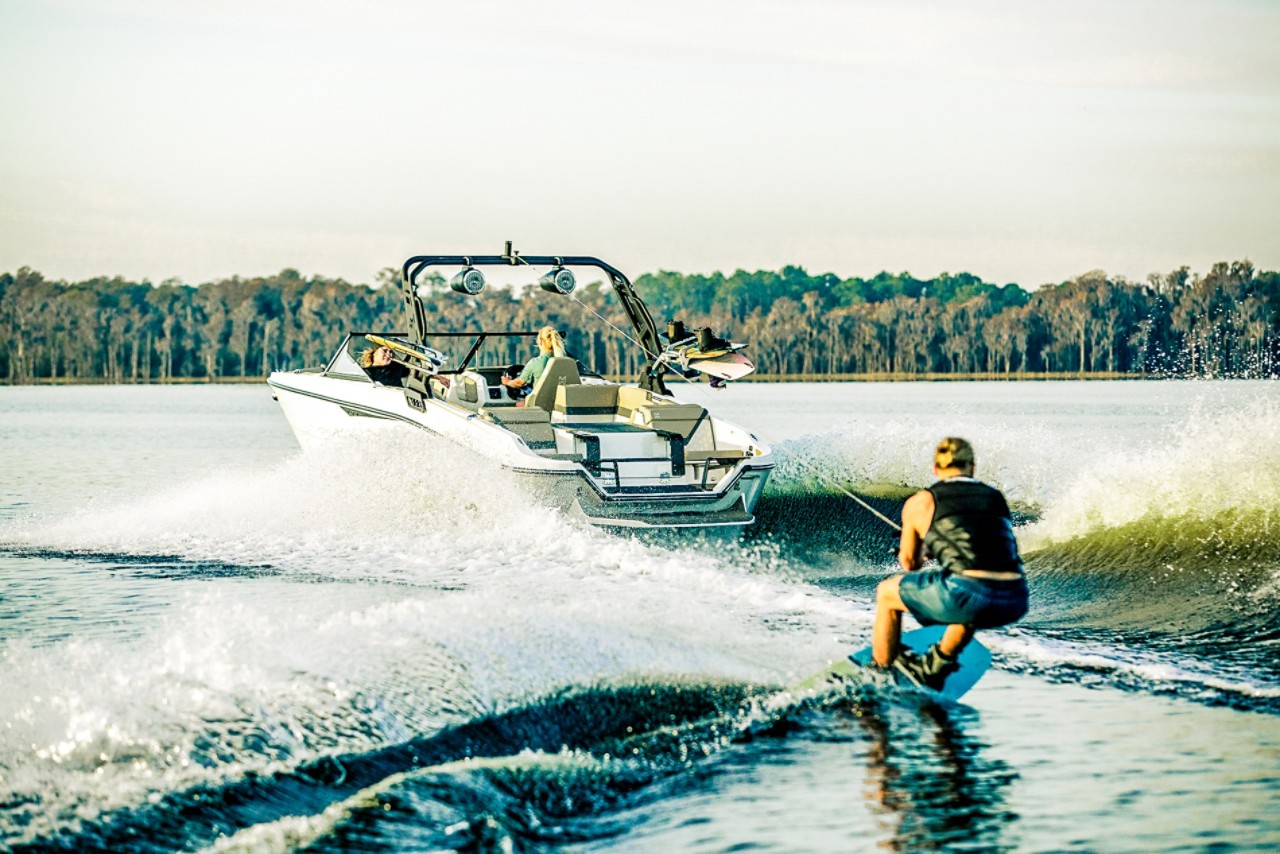
If you want to tow two or more wakeboarders at once, here are some tips:
- Add More Weight: Fill all ballast tanks and add extra weight bags to maximize the wake for multiple riders.
- Use a Tow Bridle: Attach individual ropes to a central bridle so you evenly pull all riders from one point.
- Start Together: Have all riders enter the water, then slowly accelerate together to get everyone up at the same time.
- Take Turns: Let each rider take a turn riding solo in the sweet spot directly behind the boat.
- Watch For Crossovers: Make wide turns and pay close attention so ropes don’t get crossed as riders switch sides.
- Communicate Clearly: With multiple riders, consistent hand signals and communication are even more critical.
Night Wakeboarding
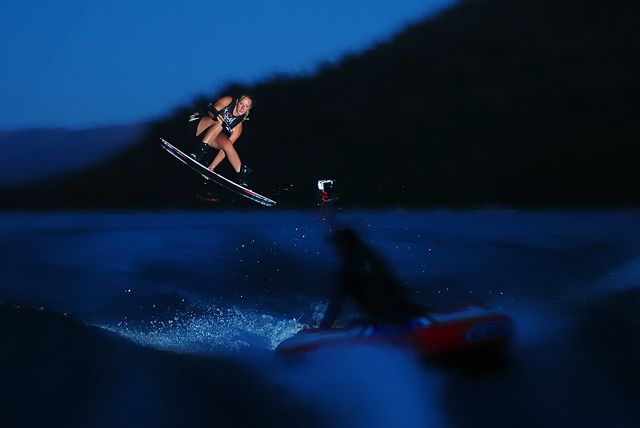
Wakeboarding at night can be an awesome experience if done safely. Here are some nighttime driving tips:
- Install Underwater Lights: Underwater LED lights illuminate the water around the boat so you can see riders after dark.
- Use Bright Deck Lights: Keep the deck brightly lit so riders can see to gear up and you can assist them.
- Add a Spotlight: Mount a swiveling spotlight you can turn to keep the rider lit up as you drive.
- Slow Your Speed: Go a bit slower at night since visibility is reduced and it’s harder for riders to see the wake.
- Bring Glow Gear: Glowing handles, life jackets, boards, etc. help riders stand out.
- Limit Distractions: At night, it’s especially important to eliminate any distractions and 100% focus on safely driving the boat.
The Next Level
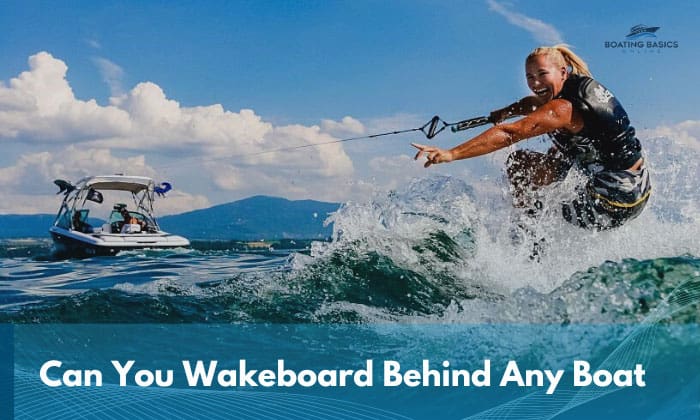
Once you’ve mastered the basics, you can move on to more advanced wakeboarding boat driving skills like:
- Executing sharp 180 and 360 turns to throw huge wakes.
- Using different side ballast configurations to shape the wake.
- Learning how to approach smooth docking maneuvers.
- Towing riders into narrow slalom courses between buoys.
- Coordinating perfectly timed double-ups.
- Allowing riders to try difficult tricks like tantrums and whirlybirds.
The more you drive a wakeboarding boat, the better feel you’ll get for controlling speed, positioning, and using the wake to its maximum potential. Mastering these advanced skills takes time and practice, but it’s incredibly rewarding when you can provide riders with a truly epic wakeboarding experience.
Of course, even the best drivers started as beginners once. So don’t get discouraged if it takes a while to get the hang of things. With the right techniques and patience, driving a wakeboarding boat will start to feel like second nature. Just take it one step at a time, focus on safety, and have fun out there! Wakeboarding is all about good times on the water with friends.
So now you’ve got all the basics covered on how to drive a boat for wakeboarding. You know how to get set up, pull riders, control speed, use driving patterns, communicate, and pick up fallen riders. That’s a great foundation of knowledge to get out on the water and start creating some epic wakes!
Remember, always drive responsibly by following local laws, keeping safety top priority, and staying alert. And don’t forget the sunscreen – us wakeboarders spend a lot of time in the sun!
Master the Basics First
As a wakeboard traveller, I can tell you that driving a boat for wakeboarding definitely has a learning curve. It’s not something you’ll master overnight, but that’s part of the journey and it’s what makes it so rewarding. You need to master fundamental skills like maintaining speed, driving straight, and making smooth turns before trying advanced techniques. It’s like learning to walk before you run.
Start by getting comfortable towing less experienced riders. This will give you a feel for the boat and how it responds to different conditions. Then, when you’re ready, take on the challenge of expert wakeboarders who require fast speeds and big wakes. This is where the real fun begins!
Remember, start out slow and progress at your own pace. There’s no rush. The most important thing is to enjoy the process. Over time and with practice, you’ll gain confidence and skills to create an amazing wakeboarding experience! And trust me, there’s nothing quite like the feeling of driving a boat and watching a rider catch air off a wake you created. It’s exhilarating!
So, whether you’re a seasoned pro or a newbie, remember to keep these tips about How to Drive a Boat for Wakeboarding in mind next time you’re out on the water. Happy wakeboarding!
How to Drive a Boat for a Beginner Wakeboarder | SAFE BOATING WEEK
Drive a boat for beginner wakeboarders! Driving can make or break a first time experience on the water. In this video we share with you some key tips on how …
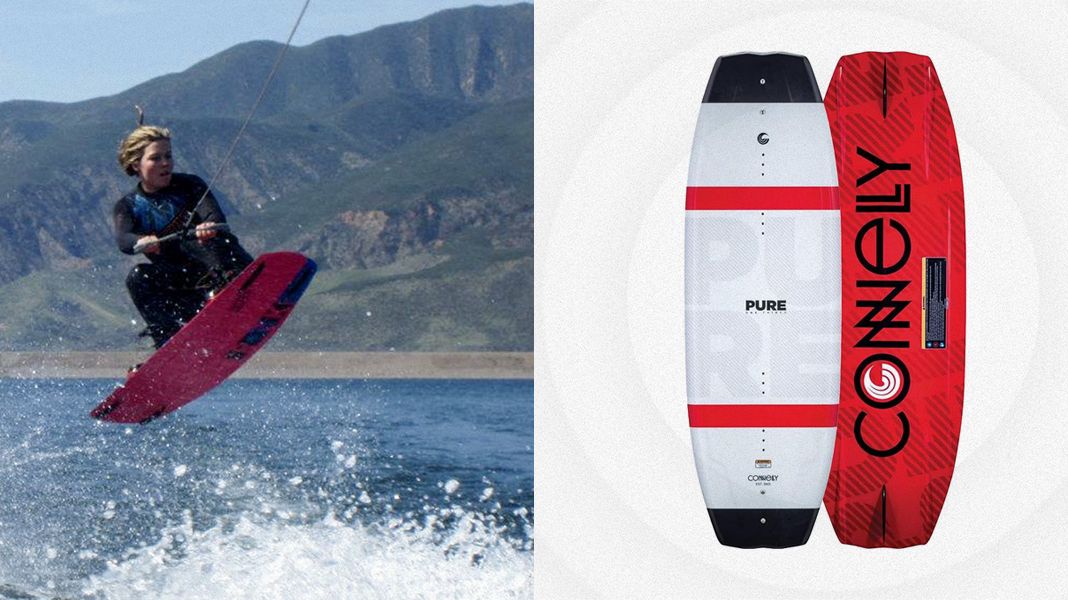
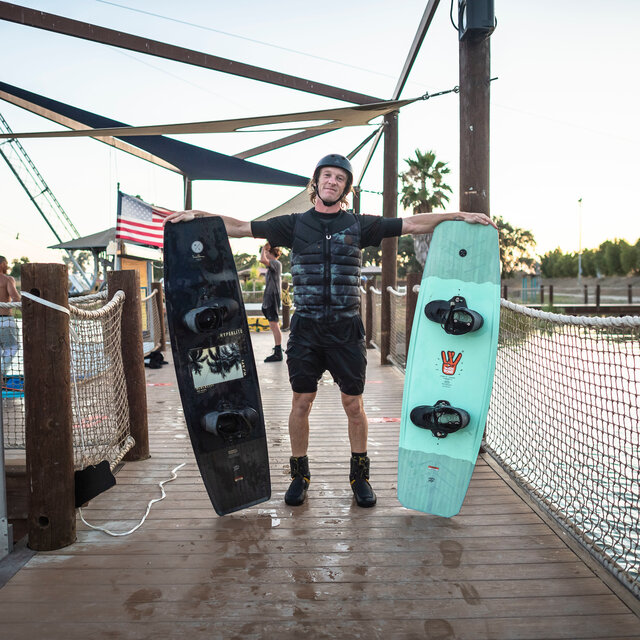
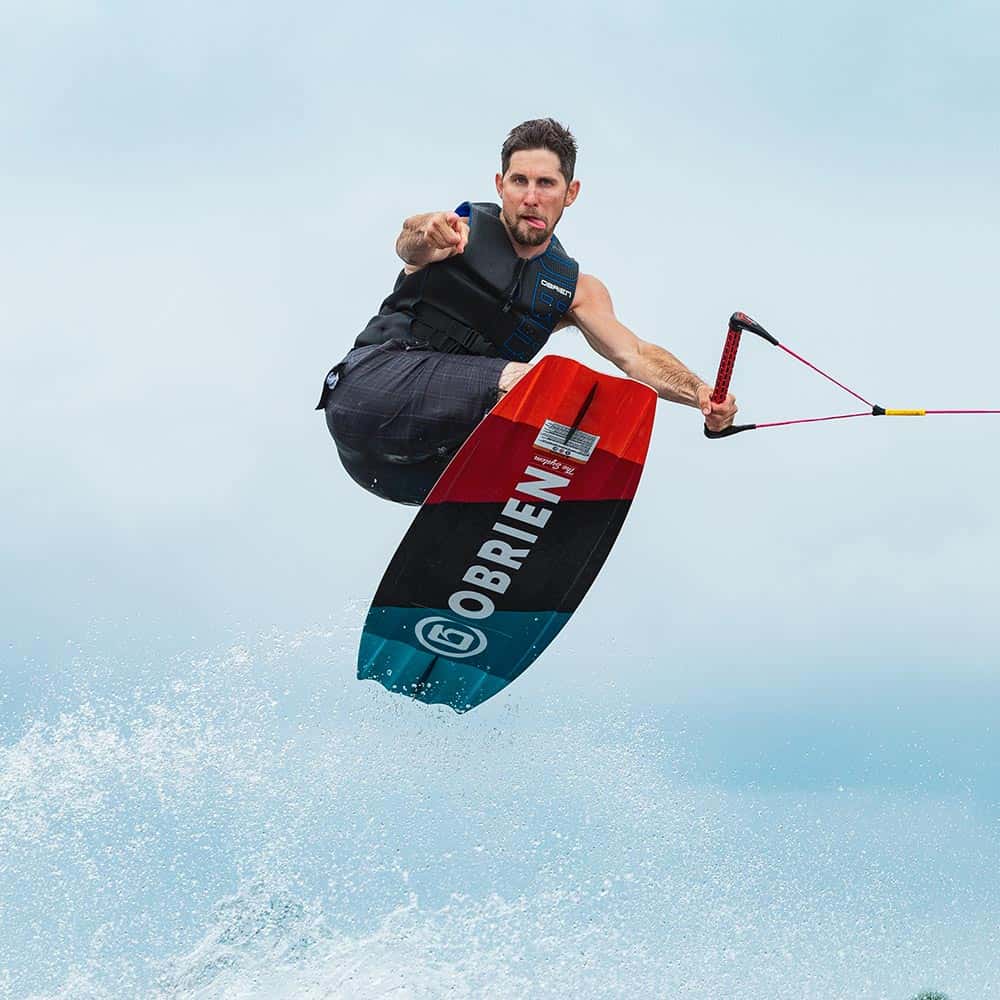
Leave a Reply